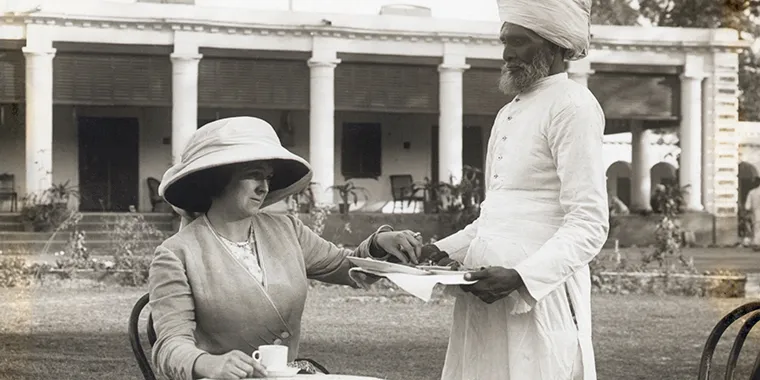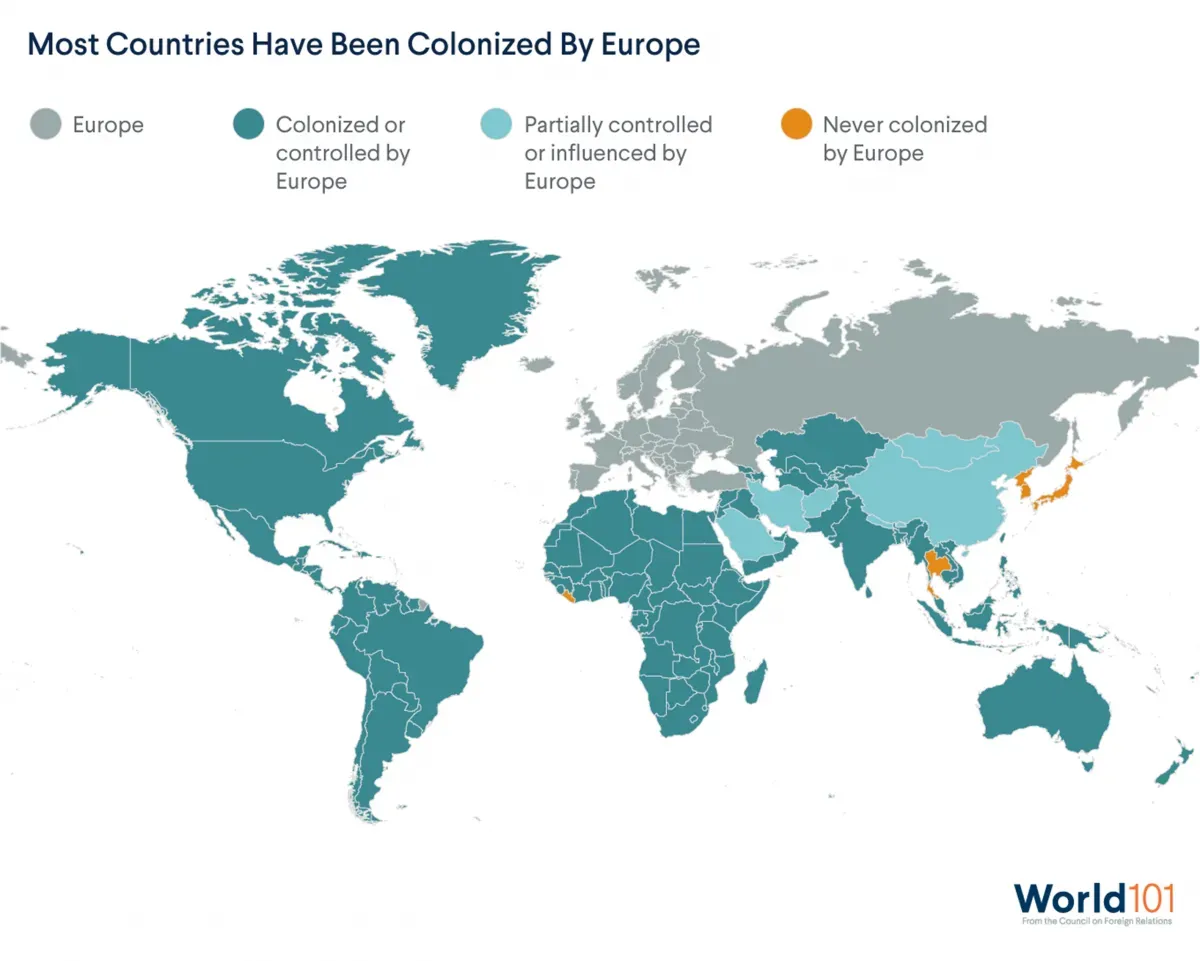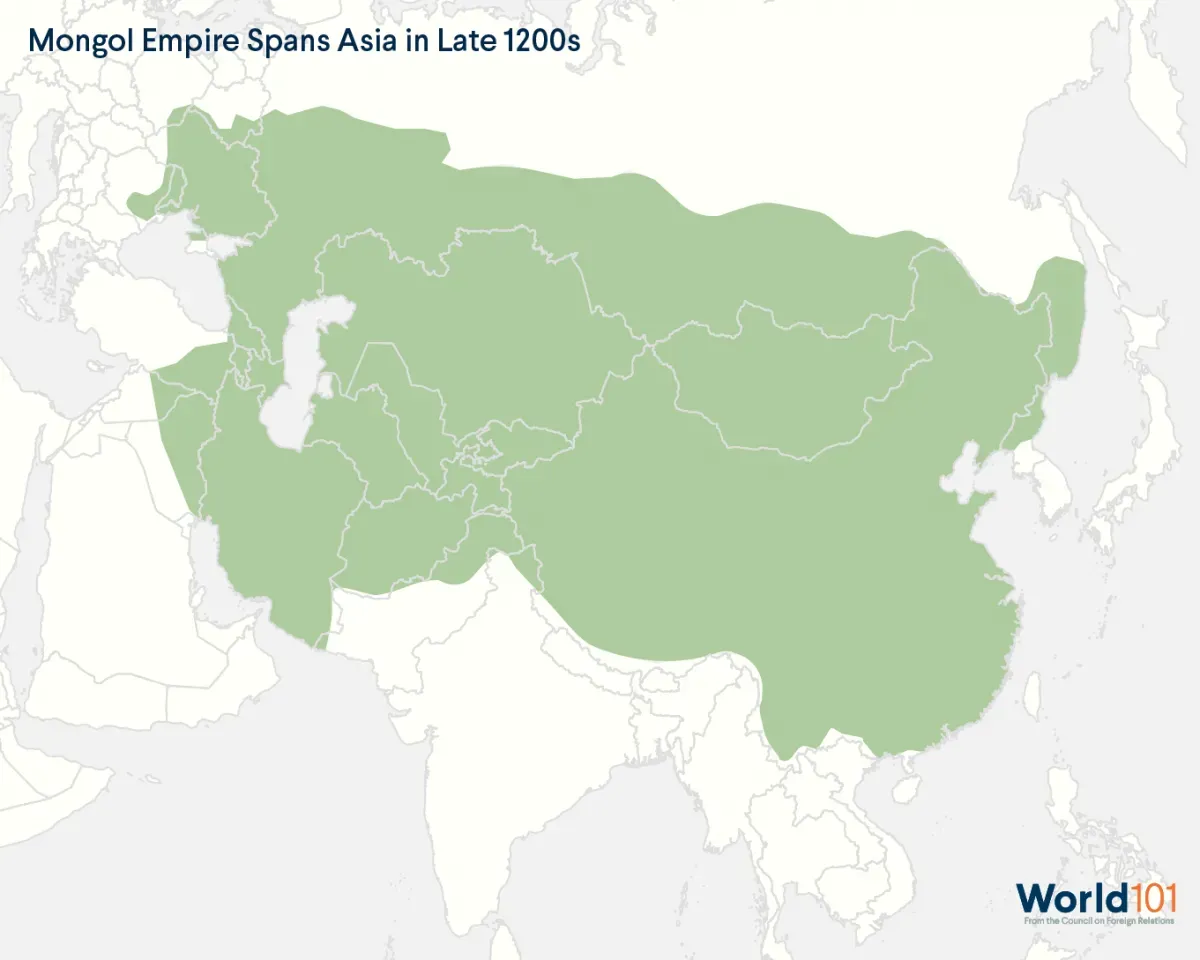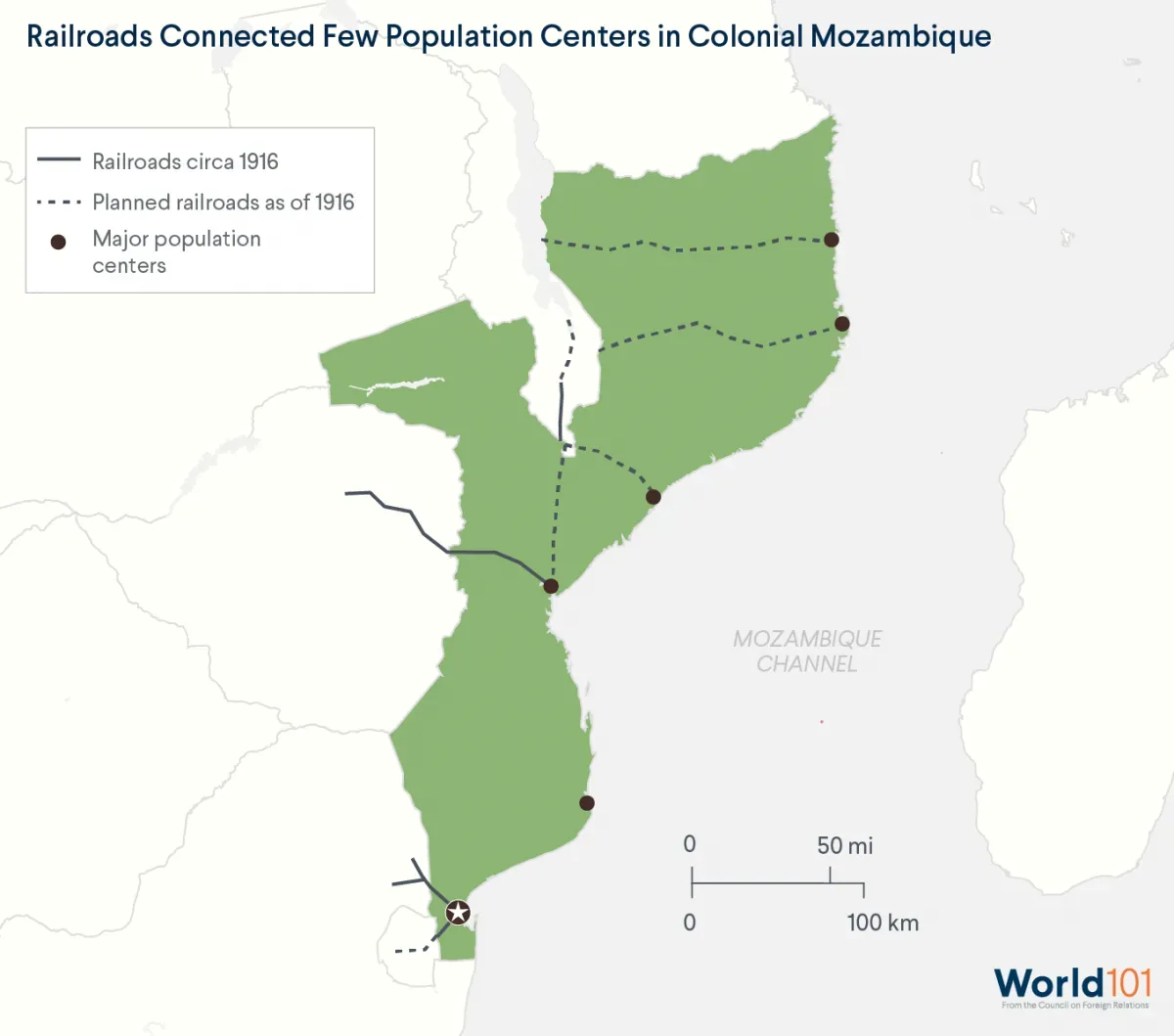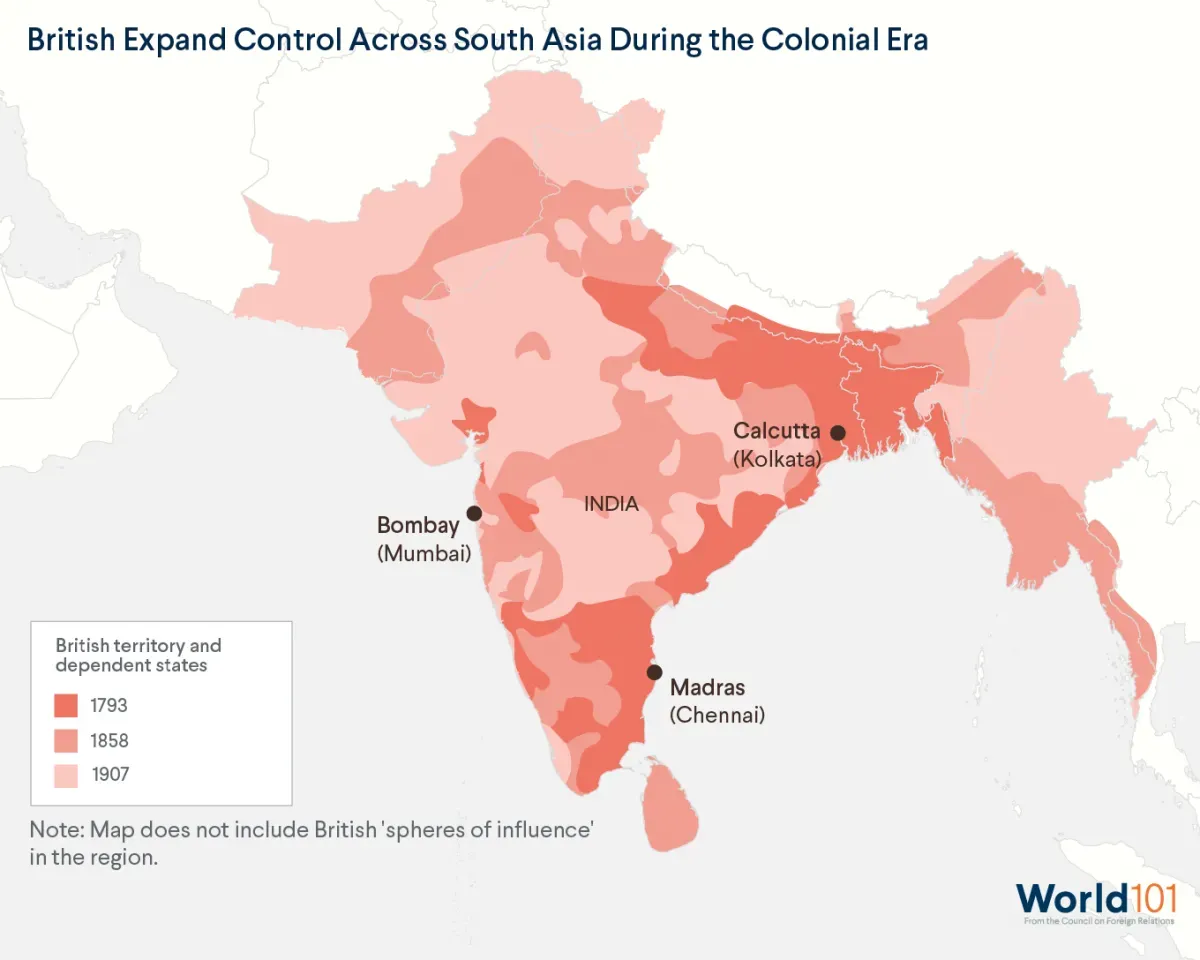What Is Colonialism and How Did It Arise?
Explore how colonialism enriched empires and fundamentally reshaped countries such as India.
In the late seventeenth century, the Mughal Empire controlled almost all of the Indian subcontinent.
European visitors marveled at the empire’s wealth and grandeur. Antonio Monserrate, a Portuguese Jesuit missionary, called its cities “second to none either in Asia or in Europe with regards either to size, population, or wealth.”
For centuries, merchants around the world had traveled to India, eager to trade for coveted silk, spices, and textiles. And in 1700, India’s economy was larger than all of Western Europe’s put together, making up nearly 25 percent of the global economy. By 1973, however, that number had dropped to just 3 percent.
How did this happen?
The full story is long, winding, complex, and contentious. It involves centuries of war, technological innovation, and global trade that sent some economies soaring and brought others crashing down. But central to this story for India—and for so many countries around the world—is the history of colonialism, the practice of controlling another country or area and exploiting its people and resources.
Between the late fifteenth century and the years after World War II, mostly European empires colonized the vast majority of the world. The French Empire, for instance, ruled over territory greater than the size of Europe. But the largest of these domains was the British Empire, which, at its peak, covered a quarter of the world. The sun was said to never set on the British Empire, as at least one of its colonies was always in daylight. Britain’s most important colony was India, the borders of which stretched from modern-day Afghanistan to Myanmar. So valuable was the colony that it accounted for half of the British Empire’s gross domestic product (GDP) in 1870.
This lesson explores the history of colonialism and its legacy, tackling questions like these: What drove empires to conquer foreign lands? How did experiences vary under different types of colonialism? Who prospered through colonialism and how are former colonies—now independent countries—faring today? We’ll begin with a survey of colonialism and then dive deep into the history of the world’s most populous colony, India.
What drove colonialism?
Empires have existed for thousands of years. In the second century, the Romans controlled territory from Western Europe to the Middle East. In the thirteenth century, the Mongols ruled an empire several times larger, which spanned Eurasia.
But the 1500s brought about a new age of empires as advanced naval technology allowed countries to expand their borders across oceans. Spain and Portugal quickly established colonies around the world. Other European powers—such as England, France, and the Netherlands—launched their own empires by the seventeenth century. And by the turn of the twentieth century, both the United States and Japan had claimed overseas lands.
Why did countries pursue colonies? Let’s explore a few reasons:
Raw Materials: Colonies provided access to gold, silver, and cash crops such as sugar and tobacco. During the Industrial Revolution, demand for cotton, tin, and oil drove further colonization of resource-rich areas, including sub-Saharan Africa and Southeast Asia.
Captive Markets: The Industrial Revolution also meant that European countries began producing goods at unprecedented rates. Eager to maximize profits, empires required many of their colonies to purchase those goods, often at marked-up prices. And in several instances, empires imposed burdensome regulations on local producers to prevent them from competing with European companies.
Religion: Some religious leaders and missionaries saw in colonialism the opportunity to convert hundreds of millions of people to Christianity. They perceived colonialism in a beneficial light, believing it could help people whom they viewed as backward, uncivilized, and unsaved from eternal damnation.
Prestige: European countries competed fiercely with each other and viewed colonies as symbols of their strength. This desire to demonstrate power and prestige largely motivated Germany, whose states had united as one country in 1871, to pursue colonies in Africa.
What did colonialism look like?
Broadly speaking, two types of colonies existed: settler colonies and extractive colonies.
In settler colonies, emigrants—often whole families—moved abroad in large numbers. They established permanent homes in the modern-day United States as well as Australia, Canada, New Zealand, and South Africa throughout the seventeenth, eighteenth, and nineteenth centuries. Settlers constructed their own farms, schools, and churches in those lands while often maintaining economic and political ties with their mother country. But in creating those communities, settlers killed and displaced indigenous people. In what became the United States, the indigenous population fell by 57 percent between 1700 and 1820.
In extractive colonies, empires cared less about building settlements and more about transferring as much wealth as possible to the homeland. In certain instances, extractive colonies emerged through foreign conquest; other times, they came about through negotiation and alliances with local leaders. Slavery was common in many of these colonies. Britain, France, Portugal, Spain, and others used enslaved labor in the Western Hemisphere to grow coffee and sugar and mine gold and silver beginning in the fifteenth, sixteenth, and seventeenth centuries. Extractive colonies became even more prevalent in the nineteenth century as Europe colonized new parts of the world. In colonial Mozambique, for example, the Portuguese developed a network of railways in the late 1800s to transport vast quantities of coal and other minerals from inland mines to coastal ports.
Yet another distinction existed in how empires administered their colonies. The French, for example, frequently imposed direct rule. This meant that in places like West Africa, the French attempted to transform local societies by implementing European-style bureaucracies, laws, and education systems. The British, on the other hand, often practiced indirect rule. In large parts of India, the British focused on resource extraction and security concerns but preserved indigenous traditions and delegated daily governance to local rulers.
As a result of these differences, colonial experiences varied widely. Some people felt little change to their everyday lives. Others faced violence, political persecution, and restrictions on their language, culture, and religion. One of the most brutal colonial experiences occurred in the Congo, where the Belgian government imposed a system of racial segregation, barred Congolese from nearly all higher education opportunities, and prohibited free speech, assembly, and travel. An estimated ten million Congolese died under Belgian rule between 1884 and 1908.
Every colonial experience was unique, but exploring a single case study can help clarify how empires exerted their strength and extracted wealth from their colonies. For the rest of this lesson, let’s walk through the story of India, which became the largest colony of the world’s largest empire.
Colonialism in India
European trade with the Indian subcontinent took off in the early 1500s when the Portuguese began purchasing Indian spices that catered to the tastes of European high society. The trade proved so lucrative that quickly many other countries wanted a share. In 1600, Queen Elizabeth I signed a charter approving the establishment of the British East India Company, which would operate a monopoly on British trade with India.
The East India Company started as a small, private business headquartered in London, with outposts in the Indian ports of Bombay (now Mumbai), Calcutta (now Kolkata), and Madras (now Chennai). It seized the opportunity to expand when political divisions and invasions from neighboring Persia severely weakened India’s Mughal Empire. By 1757, the East India Company had gained control of the wealthiest Mughal provinces through alliances with regional governors and support from the British government (where many parliament members were themselves company shareholders).
Over the following hundred years, the East India Company became enormously powerful. It amassed an army of 260,000 mostly Indian soldiers—twice the size of the British army—and defeated weakened regional leaders to expand its rule over two hundred million people. It drove other European countries out of much of the subcontinent, giving the company greater control over India’s resources for export and profit. And it looted the entirety of the Bengal treasury, seizing its gold, statues, and gem-studded swords. During their reign, East India Company officials and shareholders became fabulously wealthy: the company’s Bengal governor, Robert Clive, became the richest businessman in Europe at the end of the eighteenth century.
Although company profits soared, Indians suffered. The East India Company set regulations on what crops could be grown, where they could be exported, and at what prices they could be sold. It then charged Indians high taxes on the land they worked. Unlike most taxes, which are invested back into society, money made from the East India Company’s taxes flowed back to Britain. This practice and other policies effectively amounted to a massive wealth transfer over hundreds of years; one study estimated that by 1938 the British Empire had extracted $45 trillion from colonial India.
The consequences of profit-maximizing policies were disastrous. Notably, they contributed to several famines throughout British rule. In one example known as the Great Bengal Famine, the East India Company raised taxes on farmers by 10 percent in 1770 despite a particularly severe drought the year prior. The steep taxes meant that many farmers could no longer afford increasingly scarce food. Millions of Bengalis starved to death in what had been one of the wealthiest areas of the world for the previous three hundred years.
After an eighteen-month rebellion against the East India Company by Indian soldiers in 1857, Britain dissolved the East India Company and began ruling the subcontinent directly. Twenty thousand British soldiers and administrators would go on to rule over three hundred million Indians—at times even settling in the subcontinent with their families. Meanwhile, the process of imperial administration and extraction of wealth from India continued.
Britain maintained the East India Company’s practice of using India’s farmable land for profitable, exportable cash crops, like tea and cotton rather than vegetables. Those policies contributed to famines that occurred throughout the latter half of the nineteenth century.
Meanwhile, the British relied on India’s raw cotton to flood the global market with cheap textiles made in British mills with new technology from the Industrial Revolution. In turn, India’s once-famous textile manufacturing industry became essentially defunct when it could no longer compete with low British prices. The industry’s shift from making finished goods like fabric to, instead, exporting raw materials to England and importing the same goods it once produced domestically is known as deindustrialization—a process believed to have severely stunted India’s economic development.
Britain benefited enormously from colonizing India. It made huge sums levying taxes on goods coming out of the colony. And it profited by selling goods to India, its captive market: by the 1880s, one in five British exports went to the subcontinent.
The British also used Indian troops, resources, and labor to prop up the rest of its empire. Indian taxes directly funded the British army. Meanwhile, Britain deployed millions of Indians—paid less and segregated from white troops—to its various colonial battles and, later, to World Wars I and II. Britain even used Indian labor to work plantations in Malaya, to build railroads in Uganda, and to work as indentured servants in Fiji, Guyana, Mauritius, Suriname, and Trinidad—countries in which descendants of Indians continue to compose the largest or second-largest ethnic group.
Britain’s vast global empire only began to break apart after World War II as the country faced massive debt and difficulties affording thousands of soldiers and administrators halfway around the world. Ultimately, the British departed the subcontinent in 1947 after dividing it into two newly independent countries: Hindu-majority India and Muslim-majority Pakistan. That division not only shaped many of the region’s present-day borders but also ushered in a deeply painful period of violence and displacement known as the Partition of India, during which millions of Muslims migrated to Pakistan and millions of Hindus and Sikhs fled to India. To this day, the trauma of partition fuels deep mistrust between India and Pakistan—two nuclear-armed countries.
Challenges and opportunities after independence
Centuries of foreign rule saw immense wealth leave India. Onerous regulations stunted its economic growth while other countries rapidly industrialized. And colonial agricultural policies contributed to the deaths of tens of millions of people in devastating famines.
But would India forever experience underdevelopment after gaining its independence from Britain? In short: no.
In 2019, the size of India’s economy surpassed the United Kingdom’s, and experts believe India’s economy will soon become the world’s third largest, trailing only the United States and China. High-quality information technology services such as data processing, information security, and communications have played a large role propelling economic growth.
With a massive population nearing 1.4 billion people, India has its share of challenges. The country continues to struggle with a range of issues that frequently affect developing countries such as poverty, poor sanitation, economic inequality, and democratic backsliding.
Nevertheless, many Indians remain optimistic about the future. Colonialism devastated India for generations, but the country is once again becoming one of the world’s centers of production and commerce.
